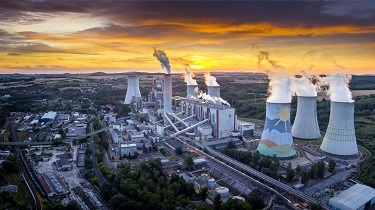To say that we’re living in an age of increased uncertainty is an understatement. The last few years have sent economists scrambling to revise their forecasts, update their models, and revisit time-tested correlations and long-held rules of thumb. Case in point: Oil prices.
In March 2022, after Russia announced its “special military operation” in Ukraine, credible forecasters raised the spectre of $200 oil if the West banned imports of Russian crude. Had you said back then that two years later, Russian supplies would still be restricted, we’d have war in the Middle East, a 5% cut in OPEC (Organization of the Petroleum Exporting Countries) supplies, major shipping disruptions in the Red Sea, and that oil would be trading comfortably below $100 a barrel, you’d have been asked to surrender your elbow patches and annotated copy of The Wealth of Nations, and banished from the halls of the dismal science.
On Oct. 7, the day of the Hamas attacks on Israel, Brent crude initially jumped about $3 a barrel, and really only peaked up $8, by Oct. 18. Since then, Brent is actually trading below where it was even before the attacks. So, what gives?
Well, like all commodities, oil prices are influenced by geopolitical events and broad market sentiment, and fundamentally driven by the law of supply and demand. On the demand side, the global economy has largely defied prognostications of impending doom. But still-high costs and elevated interest rates have constrained consumer and business activity worldwide. China, the world’s largest importer of oil, has yet to fully recover from the effects of its property sector slowdown, dampening demand for all industrial commodities, including crude.
There’s also something else going on here, something more fundamental than the cyclical gyrations of global demand dynamics. The world’s become more energy resilient. Consider, first, that new producers in the United States continue to mine shale oil. Meanwhile, Brazil and Guyana are further adding to global supplies, and Canada is set to pour about half a million new barrels of oil per day into markets over the next year, or so. Even Russian oil is finding its way to buyers looking for a deal. In fact, OPEC+ now only supplies about half the global market, its lowest share since the cartel was established in 2016.
You should also check out
EDC monitors the impacts of global events on Canada and our exporters.
Meanwhile, consumers are increasingly demanding less traditional energy and we’re seeing the rapid electrification of our economies. Technological advancements and strengthened environmental regulation mean that solar electricity generation capacity is rising at record levels—and accelerating—and the marginal costs of producing renewables are falling. These efforts will only further accelerate as interest rates come down and more investment moves into these areas.
While the energy transition is part of the story, increased energy efficiency is also having an impact. This is especially the case in Europe, following the region’s concerted efforts to wean itself off Russian fuels. Beyond Europe, the world has dramatically reduced the energy it needs to produce the same amount of output.
Global fossil fuel dependence has dropped more than 50% over the last four decades, with oil intensity falling 69%, natural gas down 43% and coal down 56%. Here in Canada, our reliance on fossil fuels is down 48% over that period, while the U.S. has seen a 62% decline, with dependence on oil declining 58% and 64%, respectively.
What does this mean for the oil market? Well, as oil dependency falls, producer margins will be squeezed. Intensified competition for market share means that those with higher break-even prices will face pressures. While Canada boasts the world’s third-largest proven reserves, most of our oil is subject to complex and expensive extraction processes. By contrast, Saudi Arabia is a swing producer that benefits from both large reserves and low production costs, allowing it to easily turn up or down production, in order to influence market prices. The country is currently sitting on about three million barrels a day of spare capacity that can easily be turned on to recapture market share.
Since most of our oil is exported through a well-established pipeline network to U.S. refineries in the Midwest and Gulf Coast, configured to refine the heavier Canadian crude, we benefit from a buffer against competition in the global market. Longer-term, however, while the energy transition isn’t a linear process and will be determined by a multitude of factors, Canadian oil exporters will inevitably face intensified competition from lower-cost producers.
The bottom line?
In recent years, Canadian oil producers have played a key role in ensuring global energy security amid rising geopolitical tensions. At the same time, the sector has vastly reduced its emissions intensity. This year promises to be a big year for Canada’s oil patch, with the Trans Mountain Pipeline Expansion project expected to add to export capacity and open new markets in Asia. But the sector faces a challenging longer-term outlook. Canadian producers need to make the investments necessary to help lower costs, add value, improve carbon productivity and leverage existing processes to build a bridge toward the energy transition. As a vital contributor to the Canadian economy, we all have a stake in ensuring the sector’s ongoing success.
This week, special thanks to Zhenzhen Ye, country risk analyst on our Country & Sector Intelligence team.
As always, at EDC Economics, we value your feedback. If you have ideas for topics that you’d like us to explore, please email us at economics@edc.ca and we’ll do our best to cover them.
This commentary is presented for informational purposes only. It’s not intended to be a comprehensive or detailed statement on any subject and no representations or warranties, express or implied, are made as to its accuracy, timeliness or completeness. Nothing in this commentary is intended to provide financial, legal, accounting or tax advice nor should it be relied upon. EDC nor the author is liable whatsoever for any loss or damage caused by, or resulting from, any use of or any inaccuracies, errors or omissions in the information provided.







